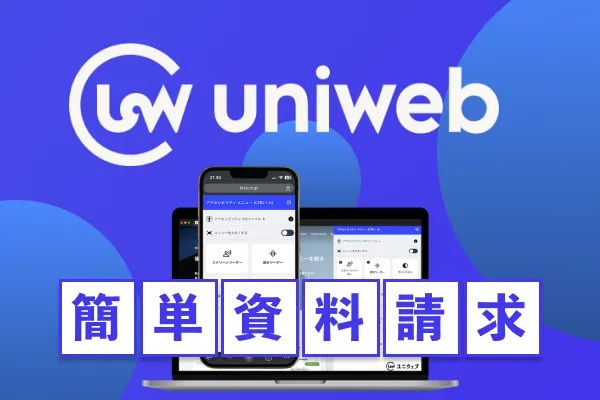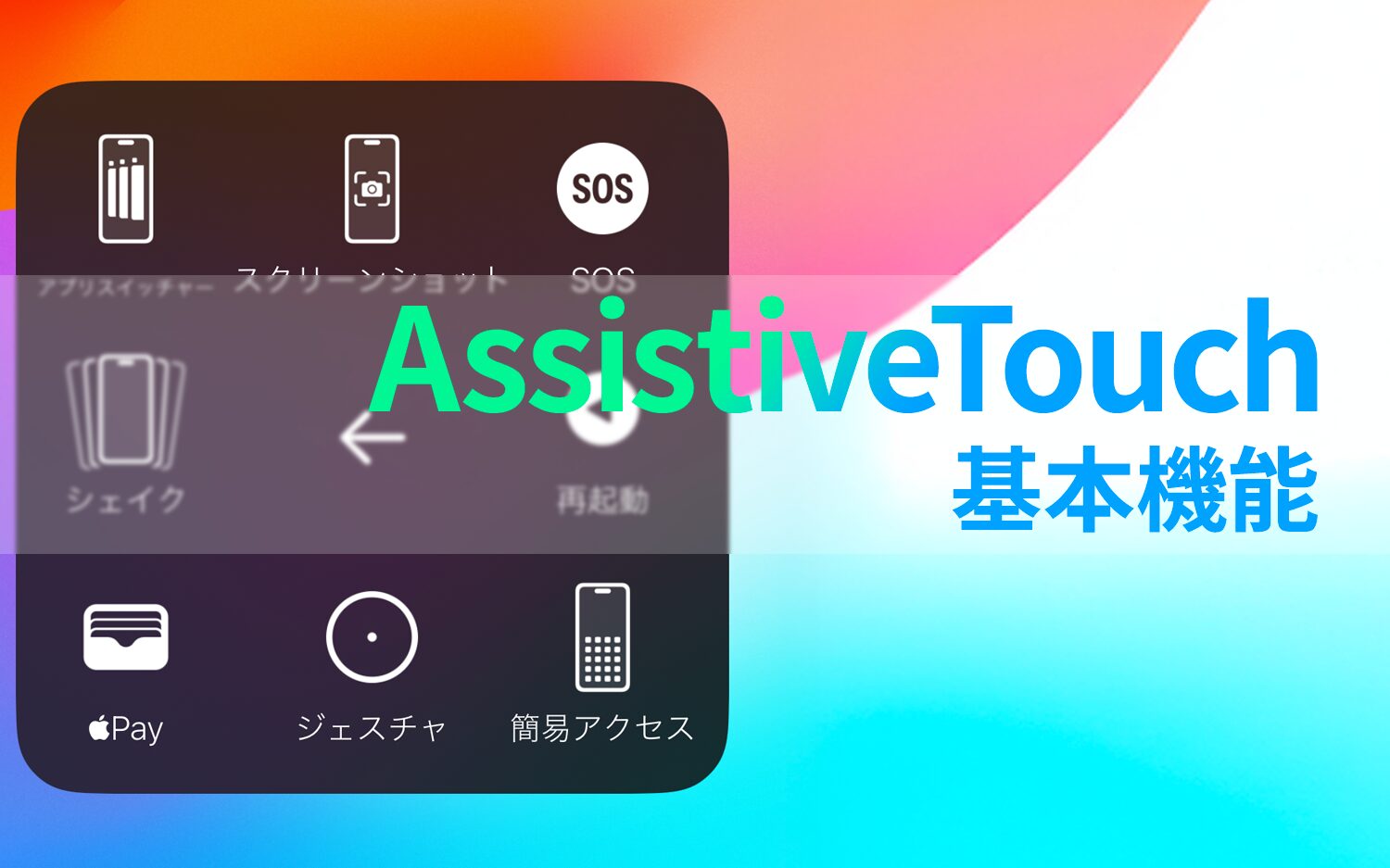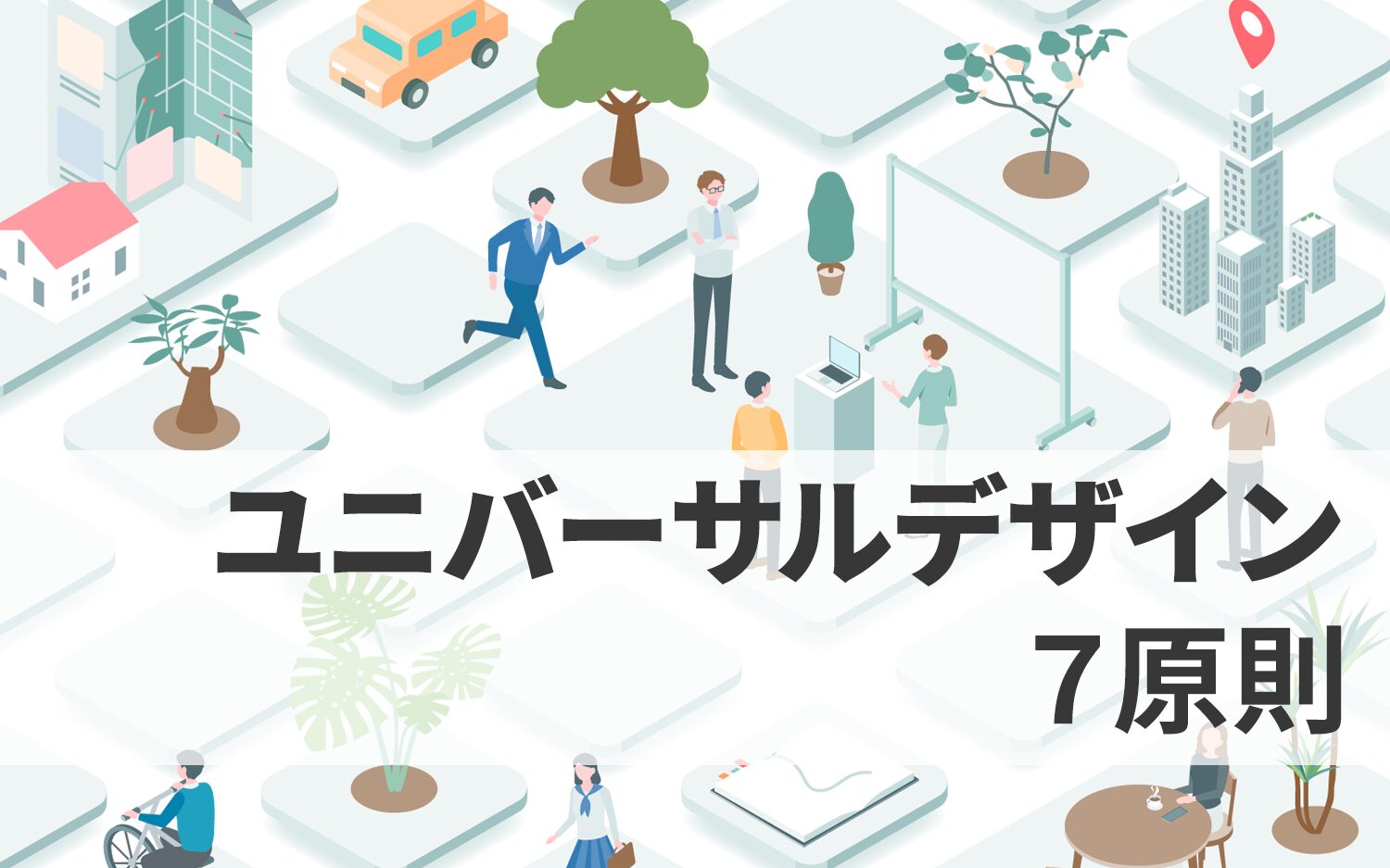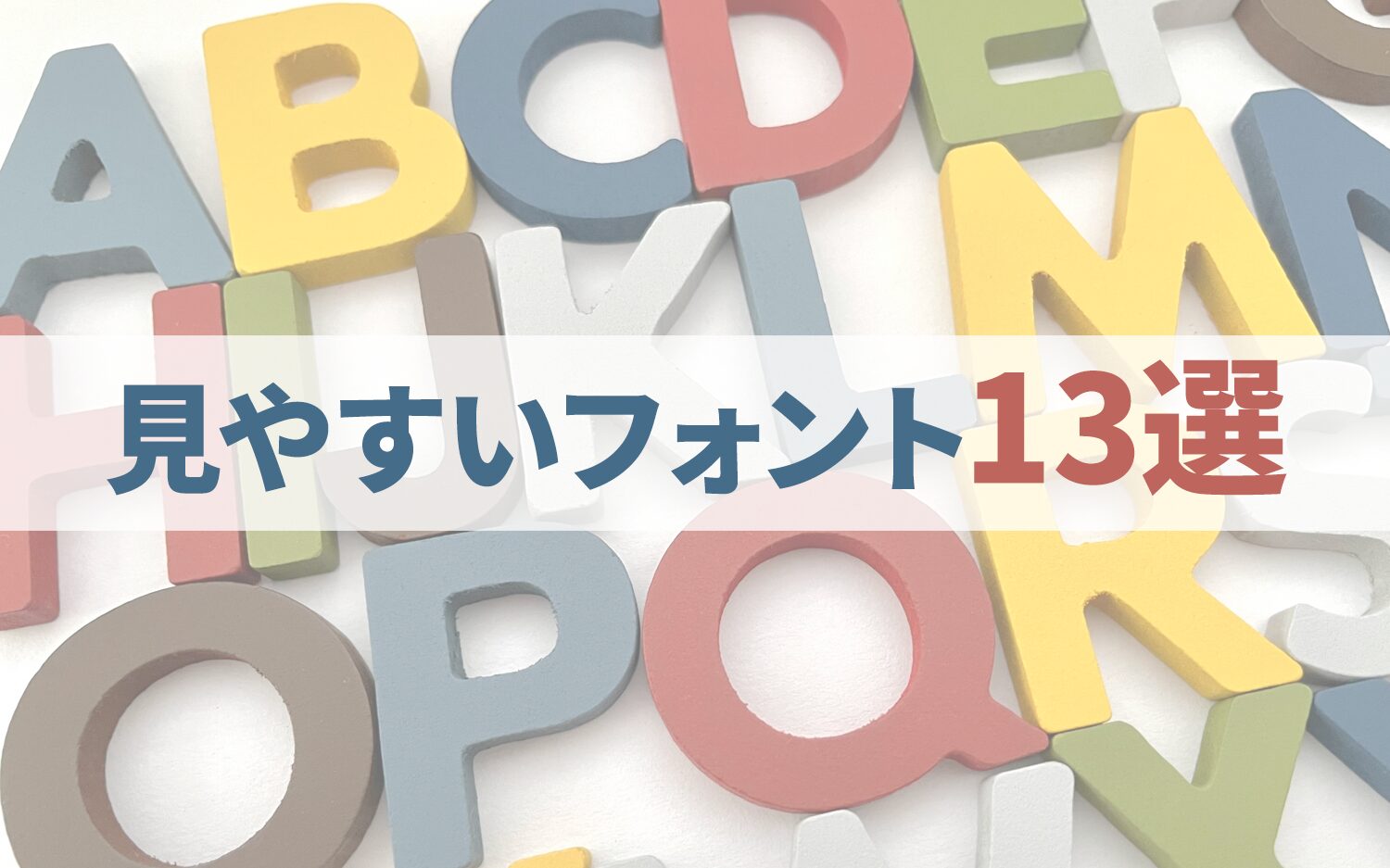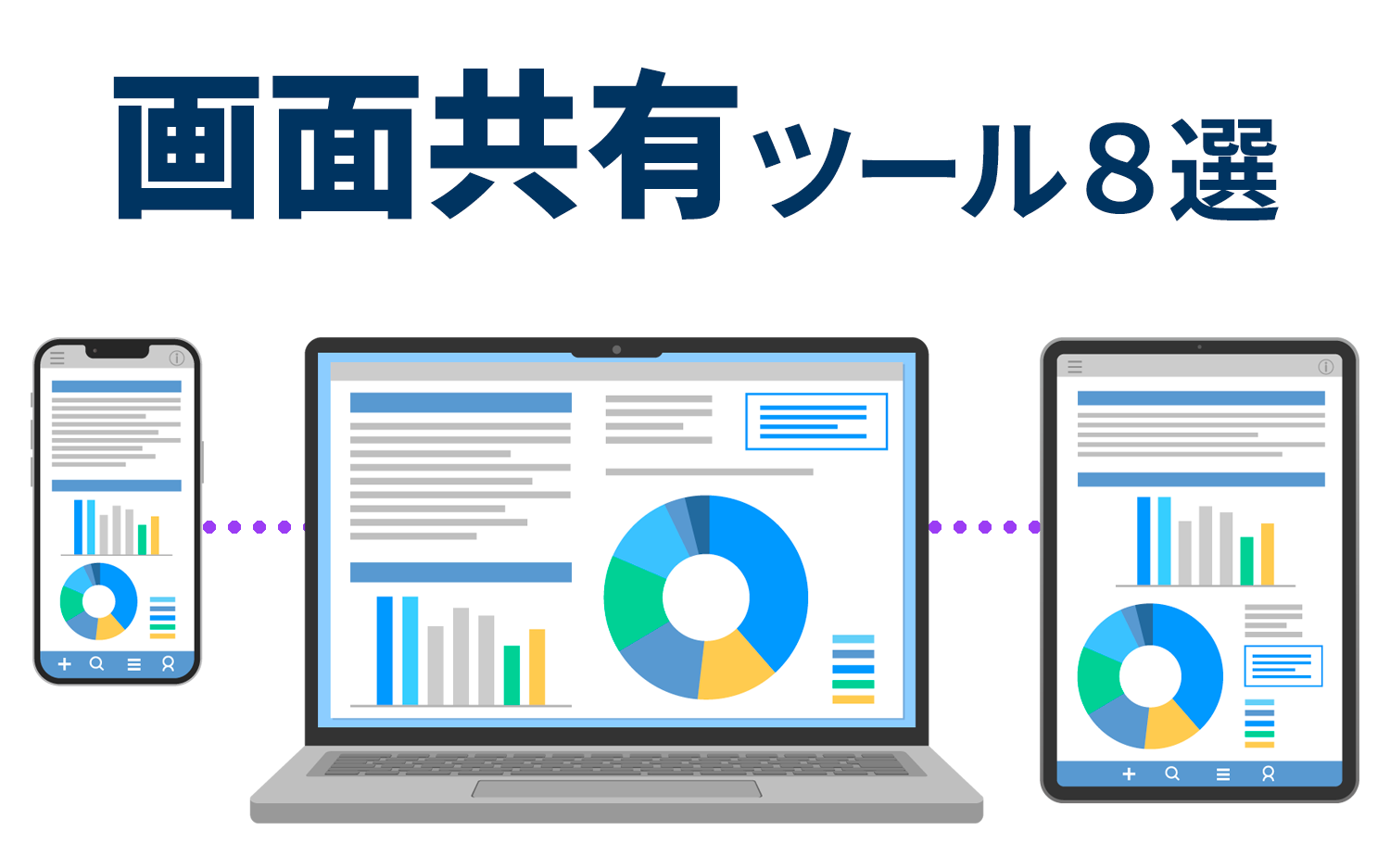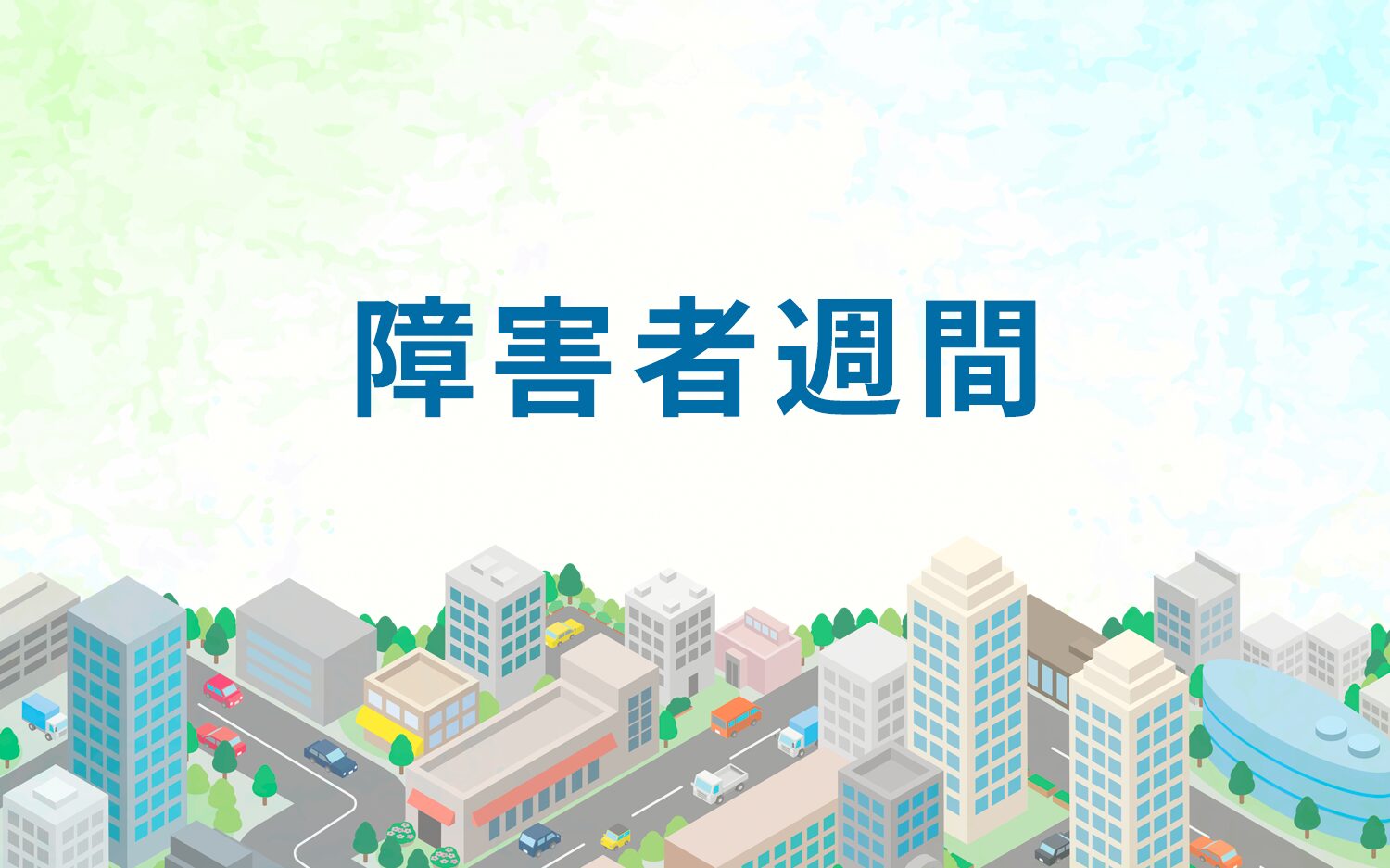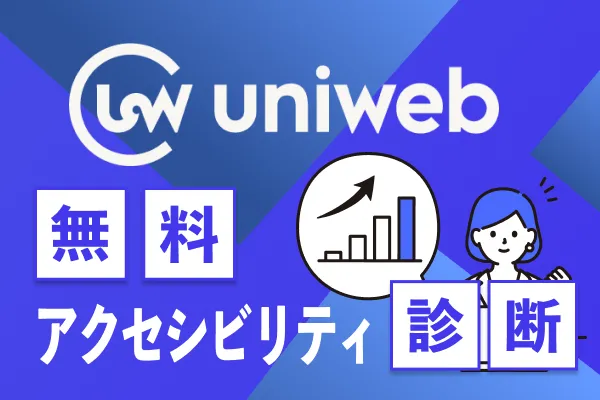Inclusive is a philosophy that aims for a society in which all people can live together.
2024/07/25
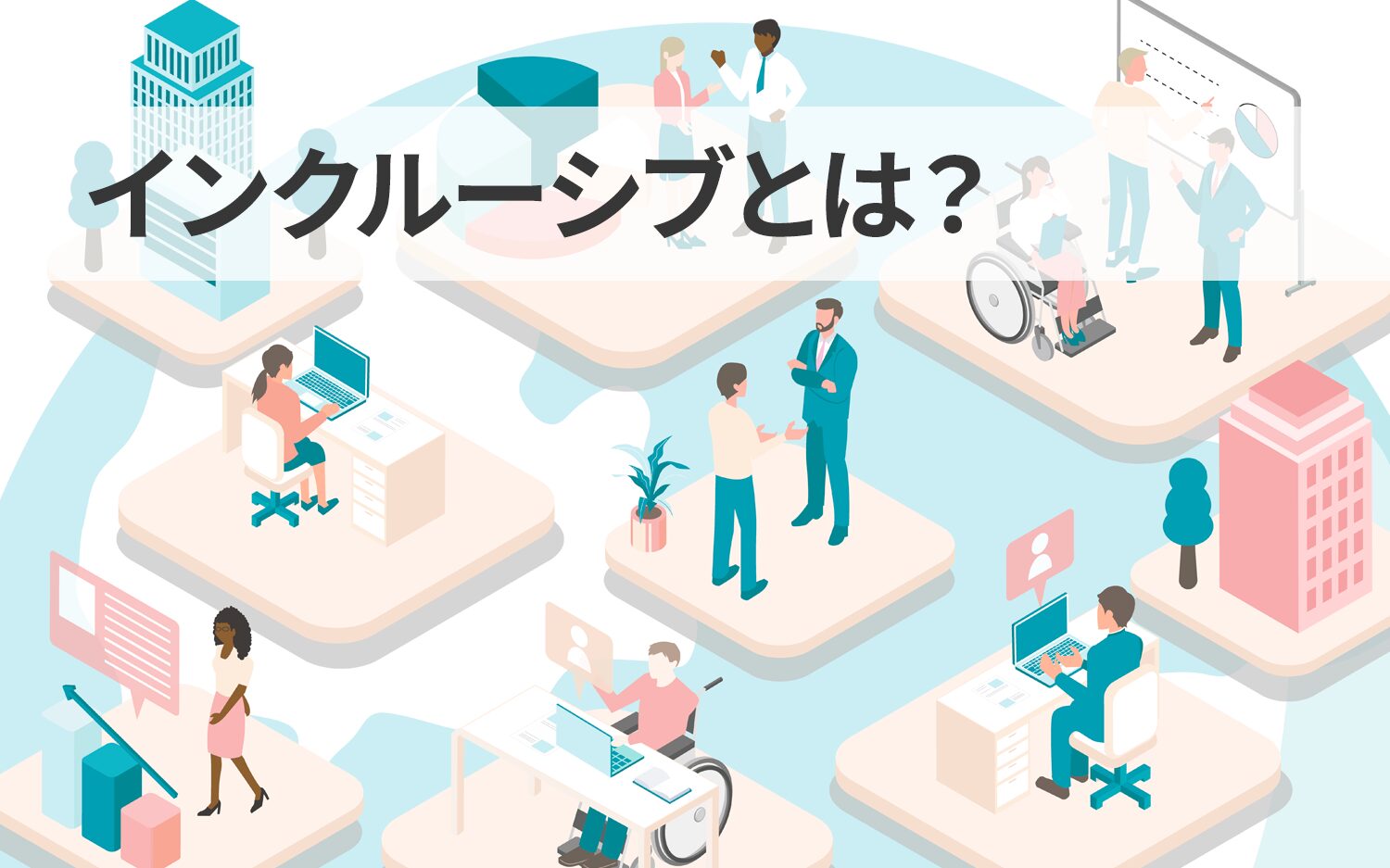
In today's society, where diversity is required as a whole,the term 'Inclusive' has been gaining attention. 'Inclusive' comes from the term 'Social Inclusion', which means 'embracing everything'.
In other words, inclusion meansThe philosophy in social policy is to support all individuals so that no one feels isolated or excluded, and to embrace and support them as members of society, creating an environment where everyone can coexist.Currently, various initiatives based on inclusivity are advancing in all fields of modern society, and many companies are promoting diversity and inclusion,increasing the opportunities for people with disabilities and diverse values to thrive, regardless of age, gender, race, or nationality.。
Inclusion is a globally shared philosophy for coexistence, but it is still a relatively new concept in Japan, which is currently in a transitional phase of becoming widespread. Therefore, this article will provide detailed explanations of inclusion while introducing actual examples.
While the concept of inclusivity originally includes diversity in gender, race, and values, this discussion will particularly focus on disabilities.
Table of Contents
Inclusivity is the necessary mindset for realizing a coexisting society.
First, to properly understand the concept of inclusivity, please refer to the diagram below.
◆ Principles of Inclusivity in Society
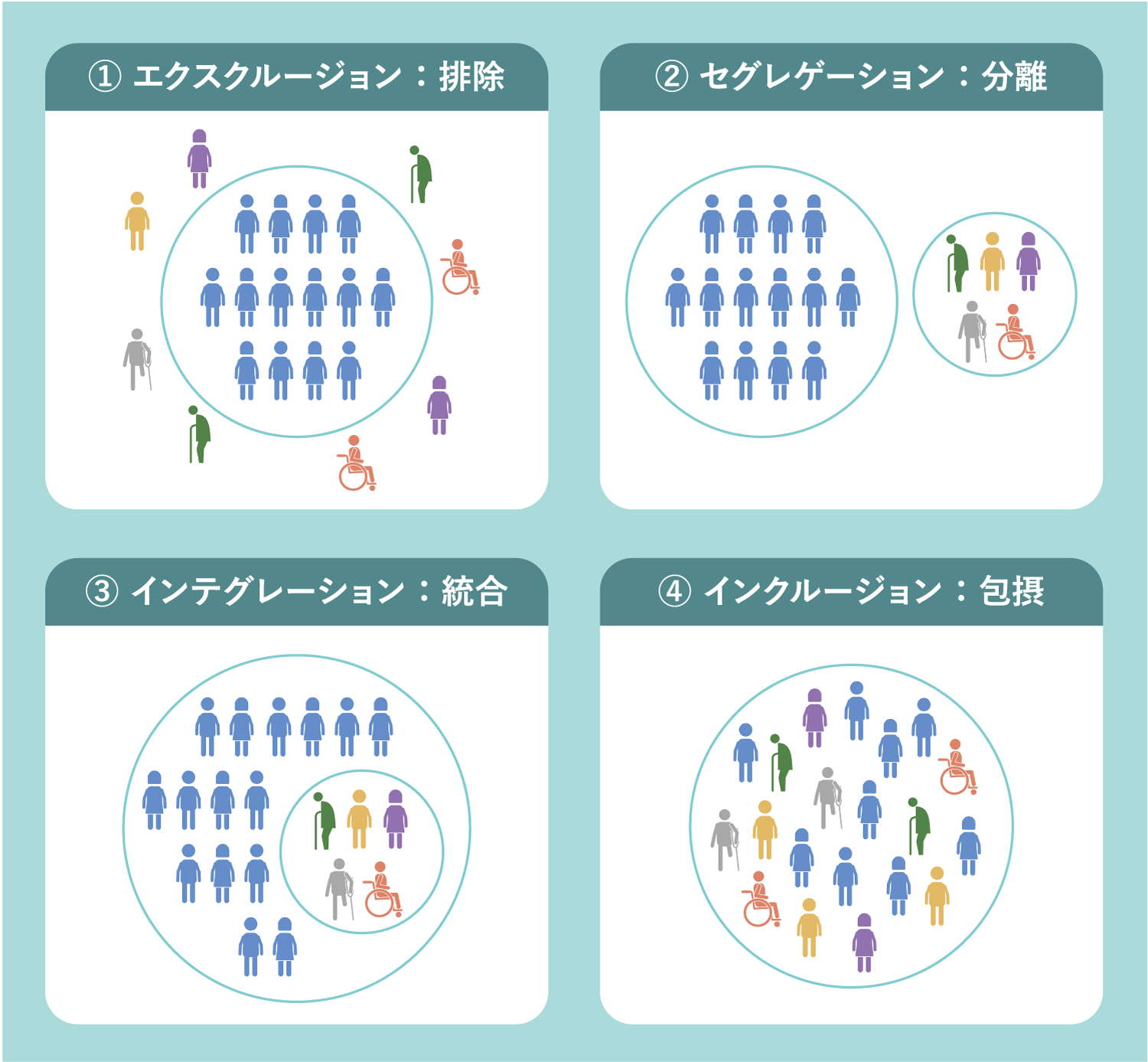
This illustrates the 'Principles of Inclusivity' released by UNESCO (United Nations Educational, Scientific and Cultural Organization) in 1994, succinctly expressing howthe relationship (status) between able-bodied persons and persons with disabilities in societyis represented. I will elaborate on each status in detail.
① Exclusion: Exclusion
A state where individuals with disabilities are completely excluded from social activities and services.This means that people with disabilities are either excluded from participating in education, work, and social activities or are not given opportunities.
◆ Examples of 'Exclusion'
• Companies do not hire people with disabilities or do not consider them in their hiring processes.
- Public events and services are not designed considering accessibility for persons with disabilities, making them inaccessible.
In this state,Not only does this hinder social participation for persons with disabilities, but it can also cause feelings of isolation and alienation.Moreover, it results in a situation where society as a whole loses the opportunity to benefit from diversity.
② Segregation: Separation
This means that persons with disabilities receive services in different places or facilities from able-bodied individuals.In this case, individuals with disabilities are gathered in specific facilities or programs, thereby limiting their interaction with able-bodied individuals.
◆ Examples of 'Separation'
- They are instructed to work in workplaces or workshops designated for persons with disabilities, making it difficult to work in general workplaces.
• It is common for individuals with disabilities to live in housing or communities specifically designed for them, leading to isolation from the wider community.
In this state,While persons with disabilities can receive necessary support, they may also be deprived of opportunities for interaction and social participation with able-bodied individuals.This can also lead to the promotion of prejudice and discrimination.
③ Integration: Unification
This is a situation where persons with disabilities exist in the same space as able-bodied individuals, but no special support or accommodations are provided.Here, persons with disabilities are in the same environment as able-bodied individuals but may not effectively participate due to lack of necessary support.
◆ Example of 'Integration'
• Individuals with disabilities work in the workplace, but do not receive reasonable accommodations or support, and working conditions are inadequate.
- They might participate in public facilities or events, but find it difficult to use them because accessibility is not considered.
While this state gives a positive impression in that individuals with disabilities can operate in the same environment as able-bodied individuals,This is typically a state where the lack of support leads to actual difficulties.As a result, achieving equal participation becomes challenging.
④ Inclusion: Embrace (Inclusive)
This is a state where persons with disabilities can participate equally, receiving necessary support and accommodations in the same environment as able-bodied individuals.Here, inclusion aims for persons with disabilities to learn, work, and live together with able-bodied individuals.We will build a society where all individuals respect each other and coexist, that is, an 'inclusive society.'
◆ Examples of 'Inclusion'
- In workplaces, persons with disabilities work while receiving reasonable accommodations, and the necessary support and facilities are in place.
• Public facilities and events are accessible for people with disabilities, allowing them to utilize and participate just like able-bodied individuals.
This state is essential for realizing a society where everyone can participate equally and be respected.When persons with disabilities actively participate in society, diverse perspectives and abilities are utilized, contributing to the overall development of society. Additionally, it fosters a culture of coexistence and is expected to reduce prejudice and discrimination.。
'Inclusion' means embracing a specific matter within a larger context; logically, it refers to a concept being encompassed within a more general one, or the relationship between them. In the context of the relationship between persons with disabilities and able-bodied individuals, it means that various people recognize and appreciate each other's individuality and characteristics and work together, implying that they are not discriminated against due to the presence or absence of disabilities.
In contemporary society,There is a strong demand for a society where people with disabilities are not 'excluded' or 'separated', but rather further advanced towards 'inclusion' as an integrated state.
Differences between 'Inclusive' and 'Inclusion'
The term 'Inclusive' comes from 'Social Inclusion', and while it is often used interchangeably, there are subtle differences.
As mentioned earlier, 'Inclusive' conveys the meaning of 'embracing', representing an ideal society where various individuals recognize each other's uniqueness and work together.'Inclusion', in general, refers to applying this to business and organizational concepts,This means that,a state where individuals with diverse abilities belong to the same company or group and engage in activities while recognizing each other's characteristics, or the process thereof.Refers to.
Valuing inclusivity in the business scene is very important in modern companies, and initiatives labeled 'Diversity & Inclusion' are promoted in many organizations.
The important 'Diversity & Inclusion' for companies.
Diversity & Inclusion (D&I) has recently become an important term in companies.Diversity refers to the state where people with various characteristics related to gender, race, ethnicity, religion, age, sexual orientation, disabilities, economic background, culture, education, and experience come together.This means, in other words,D&I aims to create an environment that accepts diverse talents and allows individuals to maximize their abilities..
In corporations, utilizing diverse talent through D&I is believed to provide various benefits.
◆ Benefits of Diversity & Inclusion
- Improved employee satisfaction and engagement.
• Reduction in turnover rates.
• Creation of innovations.
- Enhanced corporate image.
In recent years, changes in the world and the diversification of individual values in the workplaceTo enhance competitiveness in the future, promoting diversity and inclusion is an essential initiative for companies.It will be.
However, looking at the real data, as of 2021,The number of individuals with disabilities in Japan is approximately 10 million, of which around 600,000 are employed, resulting in a real employment rate of 2.2%.This is the case, and the numbers are not significant. While the introduction of D&I has been progressing year by year among large corporations, small and medium enterprises often lack the funds for facilities to accommodate people with disabilities or for outsourcing to experts.The reality is that employment of individuals with disabilities has not made significant progress..
Citation: 2021 Employment Status of Persons with Disabilities (Ministry of Health, Labour and Welfare)
Inclusive initiatives in various fields
Now, let's examine how inclusivity is being implemented in our surrounding social environment.
Education
When discussing inclusivity, education is indispensable becausethe focus on inclusivity originated from the educational setting.Inclusive education is an educational philosophy presented by the Salamanca Statement at the UNESCO 'World Conference on Special Needs Education: Access and Quality' held in 1994.
In Japan, signing the Convention on the Rights of Persons with Disabilities in 2007 initiated legal reforms, especially in education,and the promotion of special needs education to build an inclusive education system aimed at forming a coexisting society by the Central Council for Education in 2012 became a turning point for Japan to transition to inclusive education.。
Thus far, the Ministry of Education, Culture, Sports, Science and Technology, along with national and local government agencies, has been leading efforts to establish a foundational environment for inclusive education where all children, including those with disabilities, learn together.
◆ What does foundational environment improvement involve?
• Creation of individualized educational support plans and individual instruction plans.
- Ensuring the availability of textbooks and teaching materials.
• Development of facilities and amenities including barrier-free accessibility.
- Promoting exchange and collaborative learning among schools.
However, the current situation reflects what was mentioned earlier.This remains in a state of 'separation' or 'integration,' and has been pointed out by the United Nations as 'segregated special support education.'and many challenges remain.
Sports
Many municipalities and organizations are hosting sports events in accordance with inclusivity. Inclusive sports are designed for persons with disabilities and able-bodied individuals to enjoy together, allowing all participants, regardless of their abilities or backgrounds, toparticipate equally.
◆ Examples of Inclusive Sports
• Wheelchair Basketball
- Adaptive Running
- Adaptive Cycling
- Adaptive Yoga
• Boccia
- Goalball
- Floor Hockey
- Sound Table Tennis
Inclusive sports play an important role in enhancing social inclusivity by providing a space where persons with disabilities and able-bodied individuals can enjoy, interact, and understand each other.
Park
Inclusive parks are designed for use by everyone, regardless of disabilities or age. While parks are often thought to be for everyone's use,there are many parks where individuals with disabilities find it hard to enjoy due to inadequate facilities or concerns about being judged by others.By removing such barriers, inclusive parks were created as spaces where everyone can enjoy and interact.
Below is the inclusive park 'Toshima Kids Park' located in Toshima City, Tokyo.
◆ Toshima Kids Park
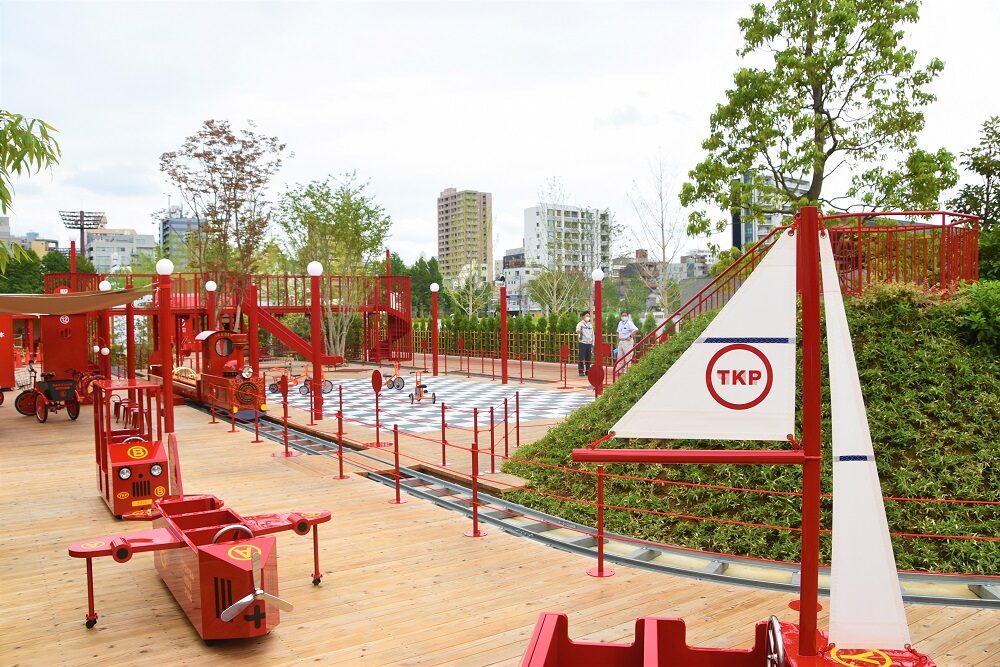
Citation: Toshima City Official Website
Inclusive parks have the following characteristics:
◆ Characteristics of Inclusive Parks
• The facility has restrooms designed for individuals with disabilities and includes adult-sized beds.
- Playgrounds and equipment incorporate universal design.
• Paths are smooth without steps and made with rubber chip pavement for easy movement.
And,There are differences in how inclusive parks are built compared to traditional parks.
◆ How Inclusive Parks are Created
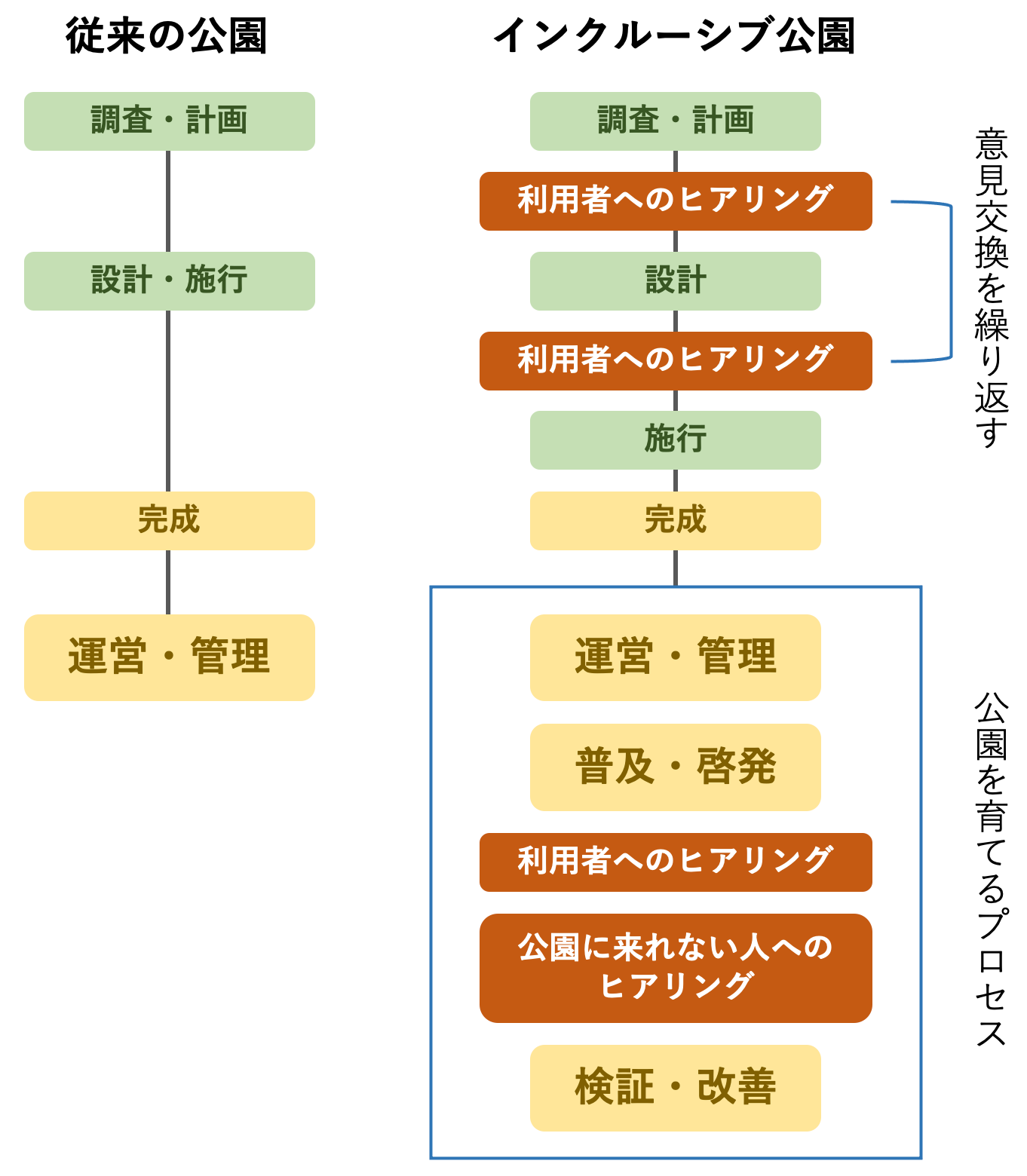
In this way, inclusive parkshave a management system that engages in continuous hearings from the design phase and also involves ongoing verification and improvement after completion to nurture the park.Measures are being taken.
Disaster Prevention
Inclusive disaster prevention is a philosophy aimed at ensuring that 'no one is left behind', including persons with disabilities, the elderly, and young children. In disaster-prone Japan, there has been a high awareness of disaster prevention, and various discussions have taken place; however, discussions surrounding vulnerable individuals such as persons with disabilities and the elderly have not been as thoroughly addressed.This issue was highlighted during the Great East Japan Earthquake that occurred in 2011.
In this disaster, 18,829 people of the population of 2,401,955 in Tohoku region lost their lives, yielding a mortality rate of 0.78%. In contrast, among the population of 115,859 persons with disabilities (registered disability cardholders), 1,658 lost their lives, with a mortality rate of 1.43%. In other words,The mortality rate of people with disabilities is approximately twice that of the general population.It has been shown that the number has increased. This fact has heightened the importance of considering and preparing appropriate disaster prevention methods for all individuals, including those with disabilities and the elderly.
As a specific example of inclusive disaster prevention,the 'Beppu Model' in Beppu City, Oita Prefectureis well known. The Beppu Model has the following features:
◆ Key Features of the Beppu Model
• Building a regional support network that includes local governments, welfare facilities, volunteers, and medical institutions.
• Information sharing utilizing various methods (visual and auditory support, plain language, pictograms, etc.) to ensure that people with disabilities and the elderly can appropriately receive necessary information.
• Implementation of disaster prevention training actively involving people with disabilities and the elderly.
By practicing these, awareness of disaster prevention throughout the community increases, alongsidedeeper interaction with local residents who are persons with disabilities and the elderly, forming a community-wide support system.This is the goal.
Web Design
Inclusive design considers various groups such as people with disabilities, the elderly, or foreigners.A design methodology that considers diverse users who have previously been excluded from the design process from the upstream stages.In particular, in web design,considerations must be made for persons with disabilities, the elderly, and users from various backgrounds,with an approach that ensures all users can easily use websites and web applications.It will be.
Inclusive web design requires consideration for accessibility, ensuring that all users can equally access information.With the revised Act on the Elimination of Disability Discrimination coming into effect in April 2024, which mandates providing reasonable accommodations, all companies are required to respond to web accessibility,therefore, understanding inclusive web design has become increasingly important.
Inclusive web design requires meeting the following criteria.
◆ Requirements for Inclusive Web Design
- Ease of operation.
• Easy-to-read content.
- Responsive design.
- Multilingual support.
By fulfilling such requirements, it is possible to provide user-friendly and appealing websites to a broader audience. Additionally, implementing inclusive web design brings about
• Inclusion of a wide range of user demographics.
- Enhanced brand image.
- Improved user experience.
- SEO benefits.
There are also substantial benefits such as these.For more details on corporate web accessibility responses, please refer to the article below.。
Reference article:What web accessibility measures must site managers implement?
Next, let's look at examples of corporate initiatives.
Five case studies of initiatives in companies
Here are five case studies of companies that practice inclusivity.
Case Study 1: ANA Holdings Inc.
The ANA Group declared its commitment to 'Diversity and Inclusion' in 2015 (which has since been modified to 'DEI' with the addition of Equity) and has focused on promoting DEI as one of its core management strategies, working toward creating an inclusive workplace where everyone can thrive, regardless of age, gender, nationality, disability status, or values.At the 'D&I Awards 2023' hosted by JobRainbow Inc., the company won the 'Best Workplace Award' for three consecutive years.Are being made.
Additionally, so that all customers can use services with greater peace of mind and comfort,they have strengthened universal services in both hardware and software.Are being made.
On the hardware side, there are measures like making the official website accessible, setting up local counters at boarding procedure stations, and introducing remote sign language interpretation services. On the software side, there are regular practical training sessions and e-learning about universal services for employees, as well as seminars inviting external speakers aimed at understanding people with disabilities.
Reference: ANA Group's DEI、Response to customer diversity (ANA Holdings Inc.)
Case ② Ōkuri Paper Products Co., Ltd.
Based in Osaka, Ōkuri Paper Products Co., Ltd. has been manufacturing high-quality paper products since its founding in 1930, and has been taking into account the opinions of individuals with developmental disabilities.'mahora',a brand of notebooks, has been introduced. The features of mahora are as follows.
◆ Features of mahora Notebooks
① For individuals with developmental disabilities, unnecessary information such as cover decorations or printed dates on the inner paper can act as noise and detract from focus, thus the cover is designed to be simple and all information except for lines for date entries is eliminated from the inner paper.
② For the inner paper, three colors, 'Lemon,' 'Lavender,' and 'Young Grass (Mint),' have been chosen from 13 types of high-quality domestic paper that reduce light reflection compared to white paper.
③ Two types of lines, 'bold-fine alternating horizontal lines' and 'mesh-patterned horizontal lines', developed independently help alleviate the issues faced by individuals with developmental disabilities, such as difficulties distinguishing printed lines on inner paper, leading to accidental line changes or distortion while writing.
Since the launch starting in February 2020, four years have passed,and the total sales of mahora notebooks have surpassed 130,000 copies, expanding their user base beyond just those with developmental disabilities to include users with cataracts and higher brain dysfunction.Are being made.
Reference: Mahora Notebook (OGUNO)、From Osaka, the notebook developed for individuals with developmental disabilities became a hit through overlapping miracles and 'manufacturing' (Nikkei Cross Trend).
Case ③ Ajinomoto Co., Inc.
Ajinomoto Co., Inc. is engaged in international inclusive business. The company collaborates with two international NGOs, Care International Japan and Japan Foster Plan Foundation, focusing on three business areas: food, biofine, and pharmaceuticals.Social business co-development aimed at improving nutrition in impoverished communities in the Republic of Ghana.This initiative has been ongoing since 1995.
In 2010, this initiative focused on improving the nutritional inadequacy of 'KOKO', a common infant food in Ghana,developing the amino acid-fortified supplement 'KOKO Plus',with manufacturing and testing sales beginning, and full-scale production and sales starting in 2012,In addition to being effective in preventing short stature and anemia, it is offered at a price accessible to low-income families, thus expanding its availability.Are being made.
Leading to the outcome that,In addition to improving the health status of infants and young children in the area, creating employment opportunities locally.it has paved the way for.
◆ Initiatives aimed at improving nutrition at Ajinomoto.
| Fiscal Year 1995 - 2008 | Developing countries (in Pakistan, China, Syria, Bangladesh, Ghana, etc.) ◎ Demonstration trials were conducted to improve nutrition, immunity, and health through essential amino acids and lysine. |
| From 2009 to 2010. | <ガーナにおいて> ◎ Launched a joint project with the University of Ghana and INF, completing prototypes for fortified foods for infants. ◎ Collaborative investigation with two NGOs has begun for more detailed studies. (Distribution sales, consumer testing, etc.) |
| Fiscal Year 2011 | <ガーナにおいて> ◎ Conducted effect verification tests using prototype products. ◎ Test sales in limited areas. ◎ Consideration of full-scale production and sales systems. |
| From 2012 onward. | <ガーナにおいて> ◎ Full-scale production, sales, and dissemination. <その他地域> ◎ Consideration of horizontal expansion to Nigeria and other countries in West Africa. |
Case ④ Fast Retailing Co., Ltd.
Fast Retailing, which develops the apparel brands 'Uniqlo' and 'GU', began focusing on employing people with disabilities at domestic Uniqlo stores in 2001 and has been promoting diversity and inclusion initiatives. In 2021,Joined the international initiative 'The Valuable 500' aimed at promoting the success of persons with disabilities.Are being made.
In domestic Uniqlo and GU stores, the goal is to employ at least one person with a disability per location, actively working on hiring and building a supportive workplace environment. Job training is provided to employees with disabilities as well, to expand their skills and potential for roles such as store managers and trainers.
The company also focuses on products and services that reflect the voices of customers and employees with disabilities. For instance, Uniqlo...A 'front-opening innerwear' developed in response to customers who have difficulty donning or removing clothing due to disabilities is now available for sale.Reviews on the product pages below include voices of joy from families with individuals with disabilities.
Airism Front-Open Crew Neck T-Shirt/8 Sleeve (Uniqlo Official Online Store)
Additionally, the company is actively engaged in various forms of support for people with disabilities, including supporting disability sports and as part of community activities.
Case Study 5: IKEA Japan
IKEA, the world's largest furniture retailer, has been engaged in employment policies and marketing initiatives aimed at achieving inclusivity for a long time, providing a workplace where everyone feels fairness and inclusion regardless of gender, sexual orientation, ethnicity, race, nationality, or disability status.
IKEA aims for gender parity in employment ratios and management positions across all countries where it operates,In 2021, the percentage of women in managerial positions at IKEA Japan was 51.5%, while the overall percentage of women among all coworkers (employees) was 65.5%.which has been achieved. Additionally, in 2014, they implemented equal pay for equal work, and since 2018, have been working to eliminate the gender wage gap.
As for the measures in their stores, with the exception of IKEA Harajuku and IKEA Shibuya, each store offersfree wheelchair rentals.In addition,they ensure wheelchair parking spaces and stroller areas, install ramps at store entrances, and have larger elevators within the store.Such meticulous considerations have been provided.
Regarding product sales, for instance, various types of dining chairs are introduced that cater to each individual's needs.Product proposals based on inclusivity.This is being carried out. In this way, IKEA gives the impression that the philosophy of inclusivity is pervasive throughout the company.
Reference: IKEA's thoughts on equality, inclusion, and diversity.、Ideas for creating an inclusive table for everyone with dining chairs (IKEA Japan).
The ideal inclusive society that we aim toward globally.
In this article, we have introduced various examples of inclusivity within the country,In Japan, inclusion is still a new concept and is currently in a transitional phase of becoming widespread.As previously mentioned, many challenges remain in education and employment sectors.
However, achieving an inclusive society is now set as a goal globally, and in practice,The term 'inclusive' is widely used among the SDGs and is considered a crucial concept for achieving the goals.In the future, domestically as well, in various contexts,Creating an environment to achieve an inclusive society.Will likely be required.
Therefore, both companies and individuals must consider what is necessary and what can be done to create a society where 'no one is left behind and everyone can coexist.'
-
Contact Us
-
Request Info
-
Free Trial
-
Partner System

